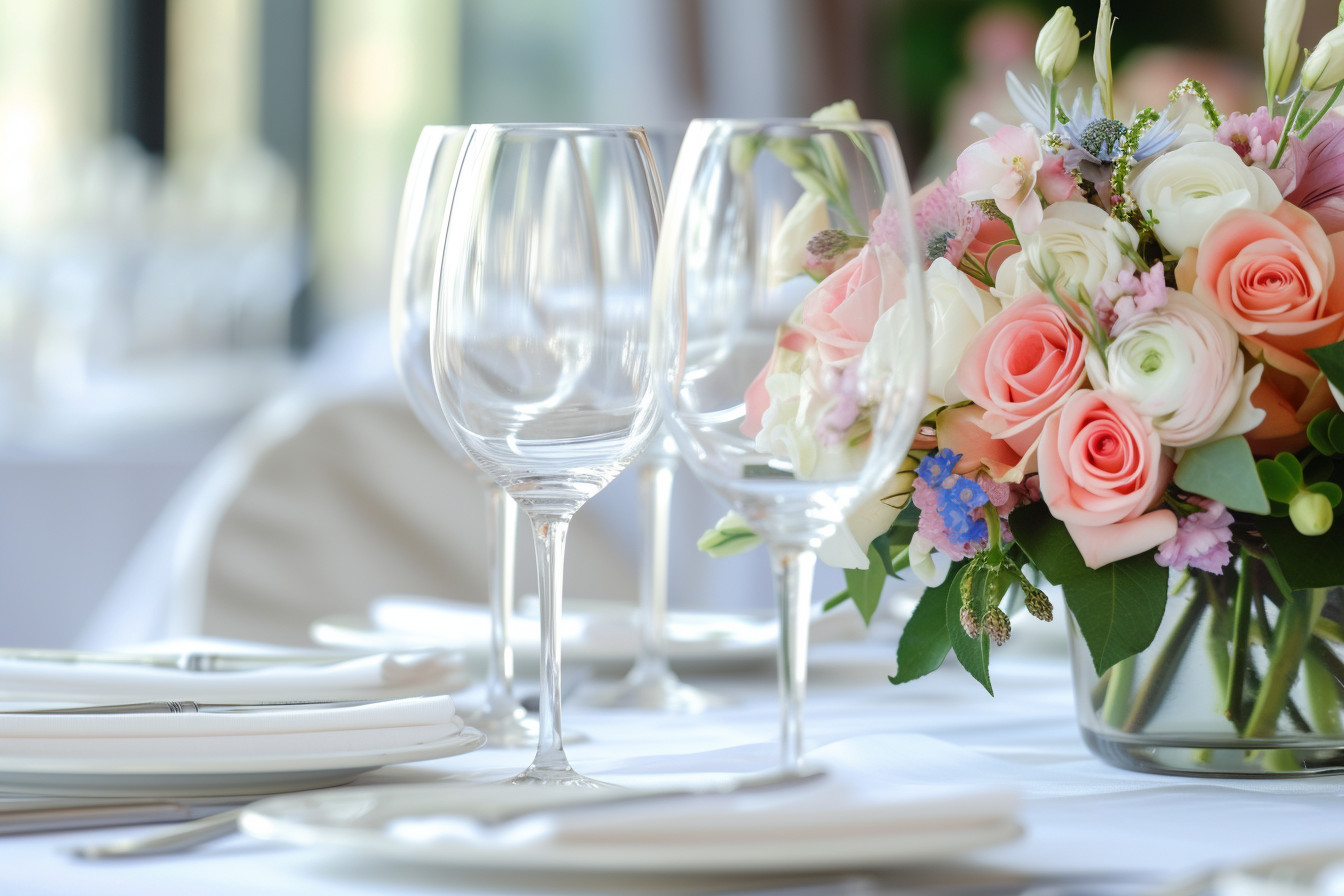Have you ever been drawn to the idea of hosting gatherings that feel both elegant and effortless? Well, minimalist home entertaining might just be your vibe. Picture this: a gathering where every element serves a purpose, resulting in an ambiance that’s not only chic but also incredibly welcoming. It’s about making space for genuine connection without the usual chaos or clutter.
Hosting with minimalism at heart means embracing simplicity while celebrating life’s special moments. You don’t need extravagant decorations or elaborate menus; rather, it’s selecting quality over quantity in everything from your guest list to your table settings. This approach doesn’t mean stripping away joy or character—it enhances them by focusing on what truly matters.
With minimalist entertaining, planning becomes much less stressful and more enjoyable—you get back significant time and energy! Whether it’s choosing simpler recipes that pack a punch of flavor or decorating with items already cherished within your home like natural plants for greenery does wonders—minimalist principles can make any party sing (or should we say hum?).

What is minimalist home entertaining?
At its core, minimalist home entertainment embodies the principle of “less is more.” It’s about creating memorable experiences without the clutter or extravagance that often accompanies parties and gatherings. You’re crafting an ambience where comfort, simplicity, and focus on your guests take center stage. Let me paint you a picture: Imagine hosting a dinner with just essential tableware, serving dishes filled with lovingly prepared food (nothing fancy but utterly delicious), and decorations that are simple yet impactful—perhaps a few candles or a single vase of flowers.
This approach not only eases hosts’ stress by eliminating unnecessary fluff but also encourages deeper connections among guests. There’s something quite special about gathering in a space free from distractions; conversations flourish naturally!
Now let’s talk numbers for those who love stats:
- According to studies on hospitality trends:
- Over 60% of people prefer intimate gatherings over large parties.
- Nearly half find overly decorated spaces overwhelming rather than welcoming.
It doesn’t end there! Adopting minimalist principles into your entertainment strategy can dramatically decrease preparation time and costs.
| Aspect |
Traditional Approach |
Minimalist Method |
| Time spent preparing |
Upwards of several hours*, depending on scale |
Often cut down by half |
| Cost |
Can spiral due to decor/food excess <br> |
Considerably lower as it focuses solely on quality |
*Times may vary based on individual experiences.
Diving further into this lifestyle means stripping back layers we’ve been conditioned to believe are necessary for successful social events—think seven-course meals replaced by three made-with-care courses focusing mainly on locally sourced ingredients, demonstrating sustainability isn’t just possible; it’s preferable.
Imagine wrapping up an evening knowing you’ve provided warmth purely through intentional choices around what truly matters—spending precious moments together—even if all was celebrated over handmade pizzas shared at one communal table speaks volumes versus any elaborate spectacle that could ever convey chef-d’oeuvre masterpieces adorning every corner.
Becoming adept at minimalist entertaining won’t happen overnight, but embracing even small aspects gradually will show profound impacts, both personally concerning how much lighter tasks feel when not drowning in details and socially observing enhanced genuine interactions sprouting from straightforward setups, inviting openness above ostentation. tie
Benefits of Minimalist Home Entertainment
You might think hosting a get-together means pulling out all the stops. Think again! The beauty of minimalist home entertainment lies in its simplicity, which brings along a treasure trove of benefits.
First off, embracing minimalism for your gatherings can be a serious stress-reducer. Without the pressure to ensure every little detail is perfect or that you have an abundance of decorations and food options, you’re freed up to focus on what truly matters—spending quality time with your guests. It’s about creating memories rather than piles of dishes.
Financial savings are another huge plus when it comes to keeping things simple. You won’t need to break the bank buying fancy dinnerware sets or gourmet ingredients for one-off uses. Stick with versatile basics and invest in good-quality items that’ll see you through many occasions instead! Elegance often resides within simplicity; something as straightforward as candlelight can transform plain settings into serene spaces where conversations flow freely.
Let’s not overlook how sustainable this approach can be too.
- Opting for digital invites over paper
- Serving seasonal local produce reduces the carbon footprint.
These choices contribute significantly towards reducing waste and promoting eco-friendliness—a principle at heart for many taking minimalism seriously.
On top of those personal gains, there’s also potential health positives, especially mental well-being. Seeing less clutter around does wonders, calming the mind, and helping to remain present in the moment. Enjoy company without distractions, mounting behind-the-scenes anxiety, and maintaining an elaborate setup.

Lastly, adopting a minimalist mindset leads to the discovery of untapped creativity. Within constraints lie opportunities to innovate, come up with unique yet simplistic ways to entertain, and showcase. Hospitality isn’t defined by quantity extravagance, but warmth welcomes genuine interaction shared. Among the bare essentials, magic unfolds, bringing authenticity to the forefront of each gathering we host and transforming seemingly ordinary encounters. enriching experiences that have lasting impacts on everyone involved.
Simplifying Your Space for Easy Hosting
Hosting gatherings in your home should feel more like a joy and less like a chore. When you adopt a minimalist mindset, entertaining guests can become both simpler and more enjoyable. Let’s dive into how simplifying your space creates an inviting atmosphere for any occasion.
One effective strategy is to declutter the main areas where you’ll be hosting. This might mean tidying up the living room or clearing off the kitchen counters—basically, creating as much open space as possible so that you and your guests can move around freely without feeling cramped. Remember, minimalism isn’t about having nothing; it’s about making room for what truly matters.
Consider adopting multipurpose furniture pieces if permanent changes are on your mind—think extendable dining tables or ottomans with storage inside them! These items serve double duty by supporting various activities while helping keep clutter out of sight when not needed.
Now let’s talk decoration: keeping decorations simple yet warm ensures that setting up (and cleaning afterward) involves considerably less effort on your part but still sets a pleasant vibe everyone will appreciate.
- Use candles or string lights to add warmth.
- Choose monochromatic color schemes with pops of color through smaller accessories.
- Optimal plant placements never fail—adding lushness plus they purify air!
Lastly, embrace digital invites over paper ones—they’re easier to manage and track RSVPs, saving time and energy. They also echo the minimalist ethos. reducing waste Here are a few things to know.
| Benefit |
How It Helps |
| Declutters Main Area |
Makes Room for Movement |
| Multipurpose Furniture |
Reduces clutter and increases utility |
Incorporating these practices does not merely transform physical spaces; it fosters mental clarity and tranquility. Imagine welcoming friends and family in a relaxed, state-centered calm.
Choosing Versatile and Multipurpose Furniture
When hosting at home with a minimalist mindset, you’ll want furniture that’s as flexible as your menu. Think about pieces that serve double duty—a coffee table that transforms into seating or storage units that can be stylishly arranged to create a room divider. It’s all about finding those gems that adapt to various entertaining scenarios without crowding your space.
Opting for multifunctional furniture doesn’t mean skimping on style, either. Designers today are savvy, creating pieces where form meets function in the sleekest ways imaginable. Picture an elegant sofa bed that looks like it came straight from a high-end boutique but folds out for guests staying the night after your dinner party winds down.
Ever heard of nesting tables? They’re practically tailor-made for minimalist hosts! Tucked away under each other when it’s just family around, these versatile little numbers come out to shine during gatherings—serving snacks, holding drinks, or acting as individual dining surfaces if you’re going super casual with floor cushions instead of chairs.
Don’t overlook wall-mounted shelves and drop-leaf tables either; they offer prime real estate when serving up hors d’oeuvres but tuck neatly away once everyone leaves—all clean lines preserved!
So next time you find yourself browsing through catalogs or scrolling through online shops, remember: investing in multipurpose furnishings is key to mastering minimalist entertaining while keeping both sanity intact and adding an air of chic sophistication!
Streamlining your menu and meal planning
Diving into the world of hosting can often feel overwhelming, especially when you’re aiming to keep things minimalist. However, by streamlining your menu and meal planning, you’ll not only ease your stress but also stick true to minimalism’s core principles. Let’s break down how this approach can transform your next gathering from frantic to effortlessly chic.
Simplify your offerings.
First up, keep your offerings simple yet elegant. Choose dishes that require fewer ingredients but deliver on flavor and presentation; think a delicate soup starter followed by a beautifully roasted chicken with two or three sides. This pared-down strategy isn’t just about making cooking easier for yourself—it creates an uncluttered dining experience that allows each dish (and guest) room to breathe.
- Starter: Delicate Soup
- Main Course: Beautifully Roasted Chicken
- Sides (choose 2-3): Seasonal Vegetable Medley | Hearty Grain Salad
This simplicity extends beyond the food itself—apply it throughout all elements of entertaining, including decorations using natural materials like fresh flowers or scented candles, which add warmth without cluttering space.
Prep works wonders.
Now let’s talk prep work because, boy, does it make life easier! Dive into any major task beforehand, whether chopping vegetables days in advance or marinating meats night before anything, really helps lighten the load day by ensuring more time mingling and less fussing over the stove. A trustworthy slow cooker becomes your best friend, freeing up well-deserved time.
Consider:
Chopping Veggies Ahead
Marinading Meats Overnight
Creative and minimalist decor ideas
When it comes to hosting gatherings in a minimalist home, you might think your options for creative decor are limited. But here’s the thing: minimalism isn’t about sacrificing style or personal expression; it’s all about intentionality and simplicity. Let’s dive into some ideas that will keep your space looking beautiful without overwhelming your guests—or yourself.
Think Natural
Incorporating natural elements can bring warmth to any gathering while keeping things simple. Try using:
- Fresh flowers in clear vases
- Potted plants as centerpieces
- Stones or wood slices as coasters
These touches add an organic feel to your table setting without demanding too much attention from the room’s overall look.
Embrace negative space.
Remember, negative space is just as important as what you choose to display. Keeping surfaces clutter-free allows each piece of decor, no matter how small, to truly stand out.
Consider arranging a few candles on a bare mantelpiece—allowing them to shine individually rather than getting lost among other items—and watch how they illuminate the room with both light and elegance.
Focus on Functionality
Every item should serve a purpose—even when we’re talking party decorations! This approach not only keeps clutter at bay but also brings practicality into design.
- Use linen napkins instead of paper—they’re more sustainable and double up as sophisticated table accents.
- Select serving dishes that complement (but don’t overshadow) what’s being served within them—a sleek ceramic platter can make even modest hors d’oeuvres seem gourmet!
By choosing pieces thoughtfully like this, you add layers of texture and additional interest inside otherwise minimized settings, making every choice count twice over!
Minimal doesn’t have to mean boring—you’ve got the world’s creativity working with Here Scour thrift stores, local markets, unique lightweight throws and rugs that practically invite people to relax, kick their shoes, and handcrafted bowls and dishes instantly start conversations while the guest sits down. Ensuring whatever pick only harmonizes existing aesthetic profiles but works against the underlying philosophy “Less More” promises these strategies play a wonderfully cozy, stylish, entertaining environment. You’ll pry yourself away once it’s done.

Planning stress-free entertainment activities
When it comes to minimalist home entertaining, the key is keeping things simple yet engaging. You might wonder how you can entertain your guests without resorting to lavish displays or over-the-top activities. Well, fear not! It’s all about focusing on meaningful interactions and simplicity.
One idea that always hits the mark is hosting a game night with a twist. Instead of traditional board games, opt for creative storytelling games or charades—activities that don’t require much in terms of setup but offer loads of laughter and fun. Plus, these types of games encourage everyone to participate actively and foster connections among guests.
For those who prefer something more low-key, consider organizing an intimate movie night. The trick here isn’t just picking out films at random, but creating a themed viewing experience based around simplistic living or inspirational journeys reflecting minimalism principles themselves. This could prompt profound discussions post-viewing, further enriching your gathering effortlessly.
How about tapping into each other’s creativity? Hosting DIY craft sessions using recycled materials sparks joy as well as promotes sustainability—a core principle within the minimalist ethos. Rather than spending money on supplies, head outdoors, collect fallen leaves, branches, etc., and then see what beautiful creations emerge from such basic elements. Not only do these activities engage folks in hands-on making, they also highlight resourcefulness and gratitude for natural resources.
Lastly, never underestimate the power food brings people together. Especially when embracing a minimalistic approach, think of communal dining experiences where preparation, consumption, and meals are shared equally. Maybe a potluck-style dinner or homemade pizza-making party Everything prepared and consumed, showing fancy gadgets elaborate recipes aren’t necessary. Enjoy a fantastic meal with friends and family.
With careful planning, having stress-free entertainment during your gatherings, feeling bolstered by the philosophy ‘less more’, is quite achievable. Simply choose a focus on connection authenticity rather than extravagance flair. You’ll find even the simplest plans become sources of deep satisfaction and delight for all involved.
Budget-Friendly Tips for Minimalist Home Entertaining
Hosting gatherings in your home doesn’t have to break the bank or clutter up your space. With a focus on minimalism, you can create memorable and intimate experiences that are both budget-friendly and effortlessly chic. Here’s how:
Keep decorations simple.
A minimalist approach means less is more—especially when it comes to decorations. Stick with simple table settings using items you already own; mix-and-match plates could add an eclectic charm without costing anything extra. Candlelight provides soft lighting and creates ambiance at no additional cost if candles are readily available at home.
- Use natural elements, like branches or stones.
- Handwritten place cards add a personal touch at little expense.
Opt for Potluck Style
When planning food, consider going potluck style by asking guests to bring their favorite dish instead of preparing everything yourself, which adds costs quickly! Not only does this save money, but it also introduces variety to the menu, making each gathering unique.
- Coordinate dishes online through group chats.
- Offer a basic drink station, then allow guests deeper exploration from there.
This method encourages community spirit among attendees as they share stories behind their culinary masterpieces!
Embrace digital invitations.
Forget expensive paper invites; embrace technology! Free digital invitation platforms offer beautiful templates tailored specifically to every occasion, allowing hosts to save significantly while maintaining elegant communication channels before any event occurs.
- Platforms such as Evite personalize events greatly.
Outdoor spaces are your friend.
Whenever weather permits, why not entertain outdoors? Backyard picnics BBQs naturally lend themselves well under stars, usually requiring much fewer preparations than indoor scenarios, while imbuing evenings with a casual yet magical note. Plus, renting out venue spaces becomes completely unnecessary, saving hefty sums along the way`.
Utilize Multi-Purpose Furniture: Investing furniture pieces Double functionality keeps houses looking sleek and reduces the need for storage solutions. Furthermore, there are seating options. Fold away easily once finished to ensure remaining ecstatically pleasing till next time round. Everyone loves good hacks, especially those that tick practicality and aesthetics. Host “BYOE” (Bring Your Own Everything). Events: making parties BYOE affairs, where everyone responsible drinks, even seats, brings together sense Camaraderie, resourcefulness, and beautifully aligning minimalistic living ideals should never feel sterile and imposing, but rather invitations. explore connections within frameworks. Low waste, high joy Remember principle Don’t sweat small stuff, worrying over minute details misses the big picture. Crafting a warm, inviting atmosphere with friends, family, and ultimately what counts is meeting halfway, which allows relentless pursuit simplicity to manifest itself in indeed very heartfelt gatherings.
Conclusion
This is the wrap-up of our journey into minimalist home entertaining. By now, you’re equipped with a fresh perspective on how to host gatherings without all the unnecessary fuss. Let’s revisit some key takeaways:
- Less truly is more when it comes to creating meaningful moments.
You’ve discovered that trimming down your preparation list doesn’t detract from the joy of gathering; instead, it amplifies it.
Remember those easy-going menus and simplified decoration ideas?
They weren’t just methods for reducing stress but also strategies for crafting an ambiance where everyone feels at ease—you included!
If there’s one thing we hope sticks with you, it’s this: hosting can be both beautiful and effortless. The minimal approach isn’t about taking away fun or hospitality. Quite the opposite! It gives room for genuine connections and memorable experiences—and, let’s admit, fewer dishes to wash after!
Embracing minimalism in entertaining does not mean every party looks identical or lacks personal touch.
Your unique flair shines through in thoughtful details—a carefully chosen playlist echoing softly across warmly lit spaces; tables set plainly yet elegantly, allowing conversations (and food) to stand out; invitations extended by heartwarming messages rather than ornate cards.
These elements? They make each event distinctively yours while keeping life simple, because who needs extra complications?
Did certain points particularly resonate with you? Remember them as guidelines—not rigid rules—for next time opportunity knocks on your door, invite people over.
It might have sounded intimidating at first to dive wholeheartedly into such simplicity, especially if lavishness was previously cherished, but look back.
See how far along understanding the tranquil beauty found within ‘less’ has brought us today?
Tell stories, share insights, and laugh together right here, amidst perfectly uncluttered settings.
Minimalist home entertaining centers humanity, warmth, and closeness before anything else, making sure no one misses grandeur, often deemed necessary elsewhere.
Fantastic starting point awaits bold partakers eager to explore further corners. minimalist living beyond these lines Rethinking consumption: challenging norms Redefining rich abundance with a hidden, less visible eye only broadens horizons and enriches lives.
Lastly, keep experimenting to find what best resonates with your lifestyle preferences. Every small step embraces principles. Clarity, calmness, and well-being witness powerful positive changes. Sprinkled throughout daily routines in unexpected ways, even outside-world entertainment Together, redefine enjoyment. Create unforgettable get-togethers by the simplest means Thank you for joining exploration. Cheers to simpler celebratory occasions ahead!









 For many years, my attic served as a dumping ground for numerous items – old furniture, childhood toys, seasonal decorations, and sundry things I hadn’t used in what felt like an eternity. Yet every time I thought about taking all those items down to the basement or a dumpster and dealing with the situation head-on, I’d put it off.
For many years, my attic served as a dumping ground for numerous items – old furniture, childhood toys, seasonal decorations, and sundry things I hadn’t used in what felt like an eternity. Yet every time I thought about taking all those items down to the basement or a dumpster and dealing with the situation head-on, I’d put it off. Before starting the task, I took time to gather my thoughts and mentally prepare myself for the work that lay ahead. It was far from easy; indeed, it threatened to become quite emotional, given that many of the items in the attic had close ties to certain moments (and some downright idiotic decisions) in my life. I opted first not so much for a linear path through the space but instead sought diversely toward different corners of the attic. Once inside these varied mini-worlds, I spent no more than 15 minutes with any one item; some deserved praise and rememberings while others needed merely recognizing before discarding them back into their cardboard boxes.
Before starting the task, I took time to gather my thoughts and mentally prepare myself for the work that lay ahead. It was far from easy; indeed, it threatened to become quite emotional, given that many of the items in the attic had close ties to certain moments (and some downright idiotic decisions) in my life. I opted first not so much for a linear path through the space but instead sought diversely toward different corners of the attic. Once inside these varied mini-worlds, I spent no more than 15 minutes with any one item; some deserved praise and rememberings while others needed merely recognizing before discarding them back into their cardboard boxes.
 When I started sorting through the contents of my attic, I had no idea how much more than just a few dusty trunks and old boxes I was getting ready to part with. The clearout ended up being a kind of mini-retreat from the past—me tidying up not only visually but also mentally and emotionally. Looking back now, I see that putting all those unwanted attic items on the ‘don’t want’ pile truly did free up for me spaces both in my home and within myself.
When I started sorting through the contents of my attic, I had no idea how much more than just a few dusty trunks and old boxes I was getting ready to part with. The clearout ended up being a kind of mini-retreat from the past—me tidying up not only visually but also mentally and emotionally. Looking back now, I see that putting all those unwanted attic items on the ‘don’t want’ pile truly did free up for me spaces both in my home and within myself. I enjoyed sharing my decluttering journey with my friends and family, and it seemed to motivate them to start their own decluttering projects. Watching the positive changes in my life surely inspired them to tackle the clanger of approach in their own homes. It was such a great sense of community and shared purpose that further enterprise seemed satisfactorily rewarding.
I enjoyed sharing my decluttering journey with my friends and family, and it seemed to motivate them to start their own decluttering projects. Watching the positive changes in my life surely inspired them to tackle the clanger of approach in their own homes. It was such a great sense of community and shared purpose that further enterprise seemed satisfactorily rewarding.



















